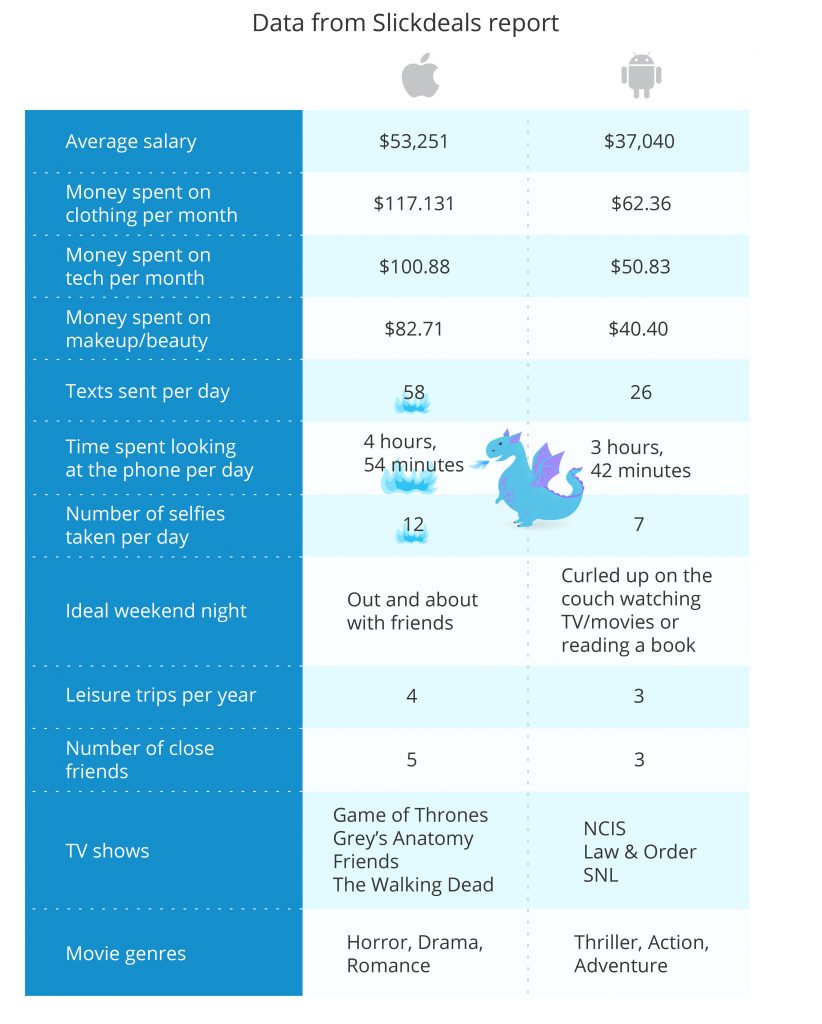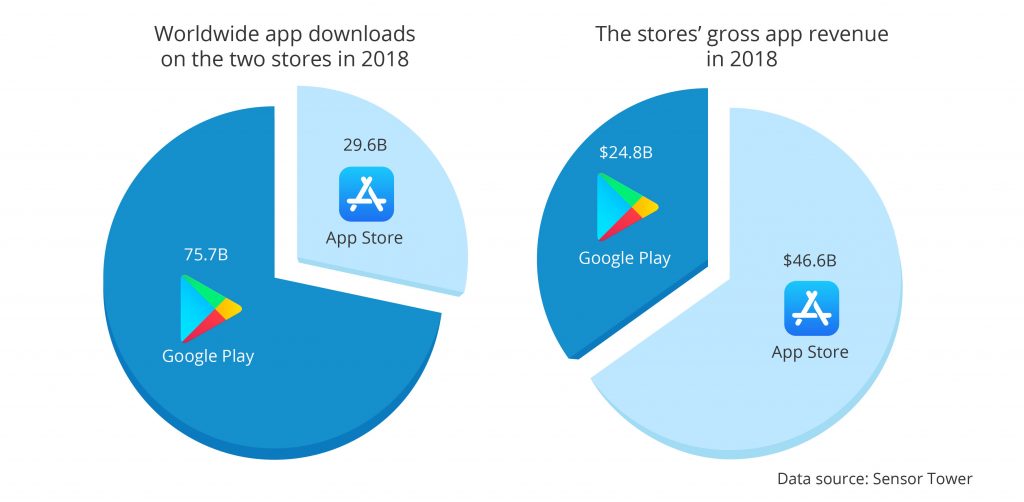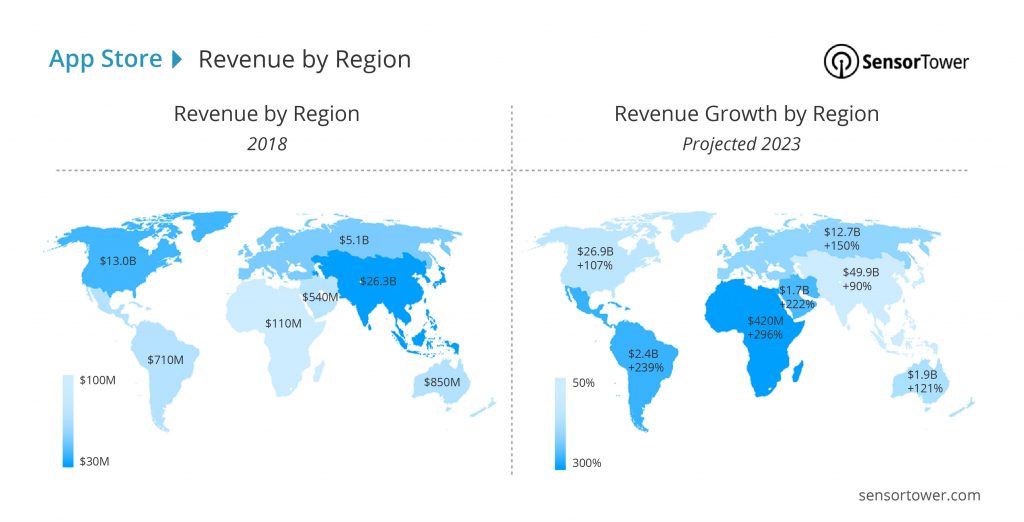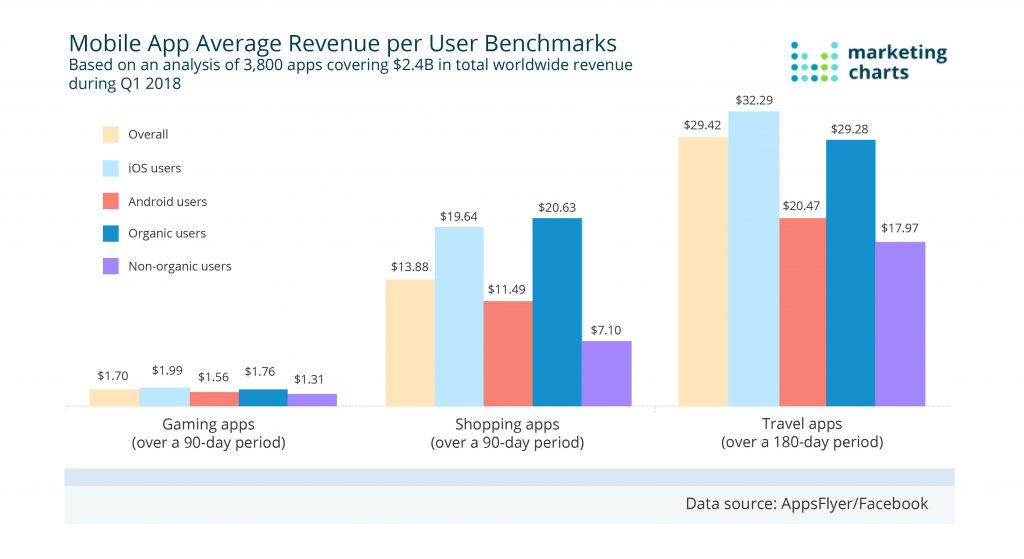3 Reasons to Launch a Real Time Messaging App (and not Only) in iOS

In the still growing market of text messaging, chat apps are crowding out traditional SMS. These apps not only allow sending messages much cheaper, but also offer voice and video call functionalities and the ability to exchange photos, videos, audio notes, and fun stickers.
In a recent article, among the steps for building a minimum viable product (MVP), we listed the necessity to decide whether to go for a native Android or iOS chat app. We therefore mentioned only in passing one of the most painful choices most startups have to make.
Not so long ago, we wrote about the advantages of Android app development. It would be fair to acknowledge the same for Apple’s platform.
The popular belief that iOS is the developer’s first choice for the hottest new apps and updates is hardly a software myth. The prime examples are Fortnite, HQ Trivia, Monument Valley 2, or Super Mario Run, which took months to get to Android after hitting the iPhone. WhatsApp, the essential chat application, and then Snapchat and Viber, were initially released in iOS too. Skype video calls had also become available to iPhone users first.
This post attempts to list the possible reasons.
3 Reasons to Build a Real Time Messaging App (and not Only) for iOS
1. Benefits of the iOS Ecosystem for the User Experience
iPhone must be the easiest smartphone to use, and its usability will continue improving with iOS 13 expected in fall 2019.
Thanks to A12 Bionic chip inside iPhone XS and XS Max, iPhones are also faster than anything on the Android side. In an editing test, it took iPhone XS just 39 seconds to transcode a video. Galaxy S9+ did it in nearly 2.5 minutes. This speed difference ensures a smoother experience, for example, with demanding AR apps.

We also anticipate a boost in iPhones’ performance. iOS 13 will load apps up to 2 times faster, thanks to improvements to how apps are architected. The apps’ size will be reduced by half, and updates will be 60% smaller. Downloading apps will speed up too.
Don’t forget your mobile app is going to run on tablets as well. iPads are user-friendly, sleek, and easy to use, which makes them perfect even for young children and the older generation. iPhone users are known for their loyalty to Apple’s devices, but you may often see people who own an Android smartphone but an iOS tablet. It’s no surprise that Apple remains the leading tablet vendor.
Your mobile application has to be written in code that is compatible with the most up-to-date software versions. Thousands of Android devices are running thousands of versions of Google’s OS. The latest, Android Pie, although doing better than its predecessors, managed to hit 10.4% of active users only after eight months. Manufacturers writing own Android software make things more complicated. Samsung and LG have big programming teams to develop regular updates for all devices they have ever sold, but smaller manufacturers’ updates may be slower to come out and glitchy to boot. Phone makers also tend to be reluctant to update older phones.
By contrast, iPhone users can get the latest OS version on the day it’s released. Apple also works hard to have users do so. As of February 2019, 83% of all iOS devices introduced in the last four years were using iOS 12. Along with the convenience and smooth experience for the users, it also means more control and stability.
Apple’s software and hardware form a whole ecosystem. The iPhone works seamlessly with Macs, Apple Watch, or Apple TV. For example, the Continuity feature in macOS enables users to send and receive text messages and receive and place calls on their MacBook when their iPhone is nearby. Users can quickly transfer photos and videos from the iPhone to MacBook over Wi-Fi. With macOS Mojave and iOS 12, Continuity Camera lets them insert a picture into a document, mail, or note instantly. iCloud keeps everything in sync.
Apple Pay, currently the most popular method for making mobile payments, can be integrated into mobile apps as well. Apple supports sending and receiving money from friends and family from within the Messages. The upcoming Apple Credit Card will help users track what they are spending and where (without hidden fees but with daily cash back rewards).
Apple gadgets are also known to be more secure and safe. According to a recent Piper Jaffray report, the majority of CIOs are choosing Apple as the supplier for corporate devices.iPhone is also the primary ‘bring your own device’ policy choice for employees. (This suggests that most workers use iPhones as personal devices as well.) Additionally, some 54% of respondents said they would increase investments in Apple products in the future. Major corporations are partnering with Apple to improve their products, services, and processes.
Finally, Apple’s App Store has strict rules and standards for the submitted applications. As a result, the public receives higher quality software and better app experiences. High customer satisfaction corresponds to high loyalty.
2. Affluent, Active, and Loyal Target Audience
When you decide for which platform to develop first, it’s critical to consider your target audience’s geographic and demographic characteristics. The knowledge of differences between Android and iOS user behavior will also help a lot. Their income and purchasing decisions will directly impact in-app purchases and subscription enrollment, which are key for planning your mobile app’s monetization strategy.
The users’ choice of a smartphone alone gives a useful insight. Apple products are typically pricier than Android’s, so it must be groups with higher incomes who are likely to purchase them. On the world map, the areas where Apple’s platform is more popular largely coincide with the distribution of high-income economies.

If your audience is in the U.S., Canada, Northern Europe, Saudi Arabia, Australia, or Japan, iOS may be the better platform to launch your product first. The same is true if you’re building an e-commerce or enterprise application.
Mobile app developers have long kept in mind that Apple customers, in addition to a higher digital device addiction, have higher incomes, higher education, and higher representation in professional and managerial jobs. Last year’s survey by Slickdealsconfirms that iOS users’ annual income is generally $16,000 higher than that of Android users.
The survey also revealed distinct differences in spending habits amongst respondents. Android users are self-admittedly more frugal and inclined to seek out deals and discounts. iOS users tend to spend about twice as much, particularly on goods relating to self-image, than Android users. (The slightly higher popularity of iOS devices with female audiences may account for that.)
Apple’s customers also look more attractive in the context of a chat application development. iPhone users are reportedly more inclined to be going out, meeting people, and experiencing new things. No wonder they travel more often and have more friends, which easily translates into more phone numbers in their contact books, more phone calls, and more photos to be shared. The survey confirms that iOS users spend more time on their smartphone daily and are sending messages and taking selfies about twice as often as Android users. According to an earlier report by Leanplum, they are also much faster to open push notifications. All those things might happen in your iOS messenger app.

The tendency of iOS users outspending their Android counterparts on clothing and cosmetics is another hint for entrepreneurs looking to develop retail apps.
If your goal is app monetization, you should consider key platform differences as well. Apple’s App Store offers almost twice as many paid apps as Google Play Store does. Apple users have long been reported to be more likely to make in-app purchases and to spend 2.5 times more on them than Android users. According to Sensor Tower, an app analytics firm, App Store made almost double of Google Play’s profit last year. The difference is even more striking because Google Play has had 2.5 times more app downloads.

Sensor Tower also predicted the Apple platform’s global revenue to reach $96 billion in 2023. Although Google Play is projected to tighten its revenue gap with the App Store, Apple’s platform should still command nearly 62% of all revenue generated by the two stores. U.S., China, and Japan should continue leading on the App Store’s global revenue, but Latin America and Africa should exhibit the most profound revenue growth across both platforms over the next five years.

If your monetization strategy relies heavily on in-app purchases, iOS may prove to be the most profitable choice. AppsFlyer’s report revealed numbers derived from an examination of both organic and non-organic traffic for games, shopping apps, and travel apps. Combined in-app purchases and in-app advertising revenue per user tends to be higher for iOS users than for their Android counterparts. Liftoff’s 2018 mobile gaming apps report also showed that the in-app purchase conversion rate for iOS gamers was nearly double of Android gamers’ rate.

Women dominate mobile game spending, so it’s good to remember that they are more likely to own an iPhone. Generally, Liftoff’s analysis of 257 billion ad impressions across apps in six categories (dating, finance, gaming, shopping, travel, and utility) revealed that ladies were twice as likely to convert than men and more engaged overall. So, if you plan to capitalize on female engagement, it makes sense to develop for iOS first.
3. Faster and Cheaper Development and Maintenance
This may be the main reason why app developers prefer releasing on iOS before Android. They have only two devices to develop for: iPhone and iPad. Although various models have slightly taller and shorter screens, the design and testing of applications are very straightforward. This contrasts sharply with the need to develop for and take into consideration thousands of different Android devices.
The habit of Apple customers to update their operating system regularly makes life much easier for developers as well. The majority of users running on the latest software on their devices means fewer possibilities of bugs and crashes for users running an older OS. Application publishers have to make updates to optimize the user experience for the newer software, but don’t have to worry about older software.
Android is an open source platform, which implies a lack of standardization. Moreover, Android’s programming language Java requires writing more code than iOS’ Swift. This results in more straightforward, rapid, and cost-effective development of applications for iOS than for Android. Some estimate the difference at 30-40%. The saved resources will help you polish the user experience and get more customers for the product.
Even if a longer review with the App Store occurs, the resulting consistent, secure, and intuitive app experience will compensate for everything. Therefore, it’s generally reasonable to develop a mobile application on the more consistent iOS platform, iteratively verify all functions, and then port to Android.

The Bottom Line
Each operating system has unique characteristics and advantages. The perfect scenario for any social network, retail or booking application, real time messaging app, game, or another product is to run on multiple platforms and attain the biggest and most diverse user base possible. Unfortunately, this is not always feasible at once. Even an MVP is risky and expensive to build for Android and iOS simultaneously. As a result, the developers pick one OS to release their product on first.
The key question to ask is about the goal and purpose of your application. Is your goal the sheer volume of users? Then Android is your go-to platform. Will you focus on driving engagement? Opt for Apple’s platform first.
Understanding of the difference in Android and iOS users’ behaviors will help you to pick the right platform and identify the most suitable target group. The revenue goals and monetization strategies, project timeline, and maintenance budget are other important factors.
Apple products are regarded as the best fit for younger, affluent audiences in North America, Western Europe, China, Japan, and Australia. iOS better suits enterprise and e-commerce goals.
Studies suggest that iOS users typically have a higher income, higher app engagement, and thus, higher spending per app than Android users. If you want to monetize your app without annoying ads, i.e. charge for downloads, or through in-app purchases, freemium models, or online payments, you should develop for Apple first.
Because Apple vigilantly controls the hardware and software and enforces OS updates, it offers a more consistent experience across multiple devices. Swift, Xcode, Firebase, and other iOS technologies facilitate the programming and development. This results in iOS applications being generally faster and cheaper to build and easier to maintain. Therefore, for most startups and in the context of building an MVP, iOS appears the best way to go.
Whatever you choose, once you’ve improved the product and built a user base on the initial platform, users on the other will start requesting a version sooner than later. At any point on this road, Alternative-spaces’ professionals are there to help!
Content created by our partner, Onix-systems.
 Home
Home